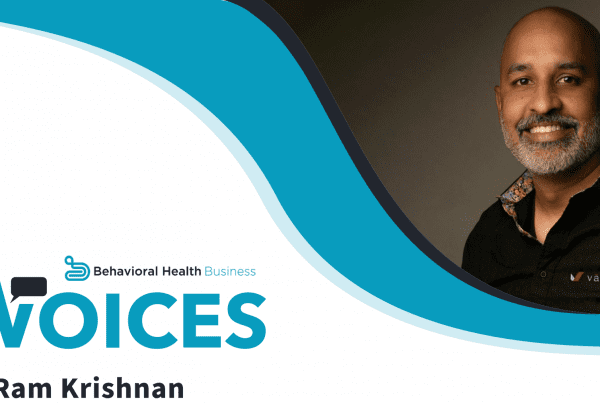Congratulations! You have received your PPP Loan. You have probably read that it’s possible to get your loan 100% forgiven – if you meet the correct criteria. Let’s take a look at that in more depth so you can put your behavioral health practice in the best position for loan forgiveness.
The loan can only be used for these specific purposes:
- Payroll & benefits: This includes salary, wage, vacation, leave, medical & dental benefits, state & local taxes. Federal taxes CANNOT be included.
- Rent: Ensure your lease was in effect before February 15, 2020.
- Utilities: Ensure your vendor and service relationship was established before February 15, 2020.
- Mortgage Interest: Ensure your mortgage was signed before February 15, 2020.
You’re on the clock
The day the funds hit your bank account, your 8-week clock starts. The lender must make the first disbursement of the loan no later than 10 calendar days from the date of the loan approval. The treasury department has made it explicitly clear that in order to meet criteria for loan forgiveness, the funding amount needs to be used for the purposes listed above within 8 weeks from the funds being deposited into your account. To clarify, the start date is neither the day you were issued an SBA loan number or the day that the SBA loan documents were signed. See “bookkeeping” below on best practices for accounting and payroll to keep the utilization of the funds clean, reportable and auditable.
75/25 Rule
Once the funds are in your account, at least 75% must be used for payroll costs. (‘Payroll costs’ is defined as above: “salary, wage, vacation, leave, medical & dental benefits, state & local taxes.) The other 25% can be used for rent, mortgage interest, and utilities. Should you want to use more than 75% of your loan amount to put towards payroll costs, you may do so. Payments to independent contractors cannot be included in the payroll costs.
Maintaining Salary & Staffing Levels
The goal of the PPP loan is to keep employees on payroll, decrease the stress on the unemployment system and inject liquidity into the market. If salaries decrease by more than 25% for any employee who made less than $100,000 annualized in 2019, or if the number of FTEs decreases (based on the FTE count you listed on your PPP loan application), the forgiveness amount will be reduced. The exact reduction calculation for this scenario has yet to be released by the treasury department. In a nutshell, you should try to maintain FTE headcount and payroll amounts that were stated on your application.
Applying for Loan Forgiveness
Applications for loan forgiveness will be accepted and administered by your lender. Communicate early and often with your lender, inquiring about the what the process will look like. Don’t wait for the lender to communicate with you! After you submit your application for forgiveness, the SBA has clarified that they are required to respond within 60 days. These are the minimum documents that are likely to be required with your loan forgiveness application:
- Payroll Documents that verify the number of full-time equivalents on payroll
- Payroll Tax Filings. These are the same Form 941 documents you provided to the lender during the application process.
- State & Local Tax Filings to show employer-paid local and state taxes.
- 401K & Health Insurance documentation that shows the employer-paid portion of medical, dental and 401K benefits offered to your employees.
- Rent, Mortgage Interest & utilities. Organize your invoices, copy of check stubs, and bank statements showing payments made.
- Accounting documentation exported from your accounting software .
Bookkeeping & Payroll
Bank Account
In order to keep the loan amount clean for accounting purposes, an option is to open a separate bank account. Have the funds deposited into the new account and (1) connect and deduct your payroll (2) pay your rent / mortgage interest (3) pay your utilities/benefits.
Bookkeeping
Set up your accounting software with the new bank account and clearly show how money came in from the loan and how money will go out in accordance with the loan forgiveness criteria above. Consider using the “Class” systems within your software to separate out what is eligible and what is not eligible. That will be particularly helpful in instances where someone has an annualized salary of more than $100,000. Here’s how that might look for different payroll cycles:
- Bi-weekly payroll (26 payrolls in the year): If the employee is making less than $100,000 per year, you can put all their pay towards your loan criteria amount. If an employee is making $125,000 per year, only $100,000 of the annualized amount can go towards hitting your criteria, so $100,000 / 26 = $3,846.15 can be counted every 2 weeks. Or, $3,846.15 * 4 pay periods = $15,384. The additional amount over the annualized $100,000 has to be excluded and should be classed differently to facilitate clean reporting.
- Two payrolls per month (24 payrolls in the year): If the employee is making less than $100,000 per year you can put all their pay towards your loan criteria amount. If an employee is making $125,000 per year, only $100,000 of the annualized amount can go towards hitting your criteria, so $100,000 / 24 = $4,166.67 can be counted for each pay period. Or, $4,1,66.67 * 4 pay periods = $16,666.67. The additional amount over the annualized $100,000 has to be excluded should be classed differently to facilitate clean reporting.
- One payroll per month (12 payrolls in the year): If the employee is making less than $100,000 per year, you can put all their pay towards your loan criteria amount. If an employee is making $125,000 per year, only $100,000 of the annualized amount can go towards hitting your criteria, so $100,000 / 12 = $8,333.33 can be counted for each pay period. Or $8,333.33 * 2 pay periods = $16,666.67. The additional amount over the annualized $100,000 has to be excluded should be classed differently to facilitate clean reporting.
Payroll
To help align your payroll numbers with the 8-week time period, you might consider adjusting the timing of your payroll date, once the funds have been deposited, to accommodate as many payroll cycles as possible. This may require you to run a supplemental payroll so you’re synced up to the day pre-funding and then have your pay period start exactly on the day the funding has dropped into your account.
Another option, after the funds have been deposited, is to run 2 payrolls per pay period. The first payroll is for all monies less than $100K annualized, the second payroll is for all monies greater than $100K annualized. This allows for easier payroll reporting and bookkeeping entries. For example, an employee is paid once per month at an annualized salary of $125,000 ($10,416.67 per pay period). The first payroll for that month for that employee would pay them $8,333.33 ($100,000 capped amount) and the supplemental payroll that is run that day is $10,416.67 minus $8,333.33 = $2083.34.
401K
The exclusion of compensation in excess of $100,000 annually applies only to cash compensation, not to non-cash benefits. This allows you to include 401K employer-paid matching amounts for pay greater than $100K annualized. For example, an employee is paid once per month at an annualized salary of $125,000 ($10,416.67 per pay period). If the employer is matching 3%, you can attribute .03 * $10,416.67 = $312.50 towards meeting your criteria RATHER THAN using .03 * $8,333.33 = $250.
Loan Forgiveness Declined
We expect more information to be released over the next couple weeks on this topic. If you are not approved for loan forgiveness, you will not have to make any payments for six months following the date of disbursement of the loan; however, interest will continue to accrue on PPP loans during the six-month deferment. Your outstanding balance will accrue interest at 1%.
What about the PPP loan that is being used for criteria not mentioned above?
You will not have to make any payments for six months following the date of disbursement of the loan; however, interest will continue to accrue on PPP loans during the six-month deferment. Your outstanding balance will accrue interest at 1%.
You’ve already taken an important first step in researching the rules. Now, with just a little additional effort to organize your bookkeeping and come up with your plan for documentation, you will be in the best position possible for PPP loan forgiveness.
View a complete list of FAQs from the US Dept. of Treasury





